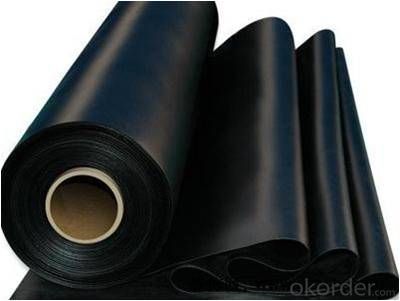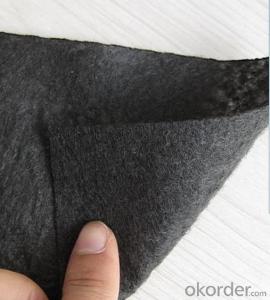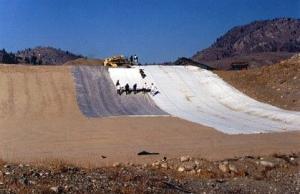Tubo Drenaje Geotextil Non-Woven Filter Fabric Geotextile for Railway from CNBM
- Loading Port:
- China main port
- Payment Terms:
- TT OR LC
- Min Order Qty:
- 5000 g/m²
- Supply Capability:
- 1000000 g/m²/month
OKorder Service Pledge
OKorder Financial Service
You Might Also Like
Specification
Product detail show :

filter fabric used in road construction Size of Package:
Width 2-8 m, length 50-100 m (or at the request)
Products description:
The raw materials of geotextile are staple fibre, synthetic staple fibres, polypropylene.

1.On a regular basis or as per your request,we entrust national testing agencies to conduct quality inspections
2. Strictly in accordance with the ISO9001-2008 international quality system standard,we monitor and manage the whole process throughout production,quality testing,and measurement to ensure product quality
3. For quality-related construction delay or substandard construction(except for damage or losses due to customer’s responsibility or irresistible natural disasters),we have refunding,replacement,and repair services.We will respond to customers’ feedbacks on quality issues within 24 hours.
After-sales service
1.In order to provide customers with comprehensive technical support,we will provide technical and other related information upon request in a timely manner.
2.In required,we will appoint specialized technicians to the construction site to give technical trainings to construction people,and offer technical guidance throughout the whole construction process.
3.For damage due to shipment and delivery,after we receive the complaint,we will check the issure through provided pictures and videos.If our responsibility is confirmed,we wil offer free replacement.
4.When the construction is completed,as your request,our technical staff may participate in the final acceptance.
FAQ:
Q: What kind of payments does jenor support?
A: T/T, L/C, Cash are accepted.
Q: Do you charge for the samples?
A: Accordeing to our company policy, the samples are free, we only charge the freight fee. And we will return the freight fee during the next order.
Q: Can you produce according to customers' design?
A: Sure, we are professional manufacturer, OEM and ODM are both welcome.
Q: Do you have other products?
A: Yes, please check the pictures:
- Q: How do geotextiles contribute to groundwater protection?
- Geotextiles contribute to groundwater protection by acting as a barrier that prevents the movement of contaminants from the surface to the groundwater. They are used in various applications such as erosion control, filtration, and separation, effectively reducing the risk of pollutants reaching the groundwater and preserving its quality.
- Q: What are the geotextiles for concrete health
- Concrete health with the geotextile, I probably understand what you mean is planted in the above plant flowers and the like, it can be used Daxiang non-woven geotextile can, and hope to help you!
- Q: 200g 300g 400g non-woven geotextile price
- 200 grams of non-woven geotextile Price: 1.40 yuan. 300 grams of non-woven geotextile Price: 2.10 yuan. 400 grams of non-woven geotextile price of 2.80 yuan.
- Q: What are the advantages of using geotextiles in shoreline stabilization projects?
- Geotextiles offer several advantages in shoreline stabilization projects. Firstly, they provide effective erosion control by stabilizing soil and preventing it from being washed away by waves or currents. This helps maintain the integrity of the shoreline and prevents further erosion. Secondly, geotextiles act as a filter barrier, allowing water to pass through while trapping fine particles and preventing sedimentation. This helps maintain water quality and prevent the buildup of silt or pollutants. Additionally, geotextiles are highly durable and resistant to degradation, making them a cost-effective and long-lasting solution for shoreline stabilization.
- Q: Build drainage board + geotextile what specifications are required
- I am specializing in the production of drainage board and other materials
- Q: What are the factors to consider when maintaining geotextiles?
- When maintaining geotextiles, there are several factors to consider. Firstly, regular inspection is crucial to identify any signs of damage or wear. It is important to promptly address any issues to prevent further deterioration. Secondly, proper cleaning techniques should be employed to remove debris, sediment, and other contaminants that may accumulate on the geotextile. This can involve gentle washing or vacuuming, depending on the specific type of geotextile and its application. Additionally, it is essential to follow manufacturer guidelines and recommendations for maintenance, as different geotextiles may have varying requirements. Lastly, monitoring the effectiveness of the geotextile over time is essential to ensure that it continues to perform its intended function. This can involve assessing its stability, porosity, and filtration capabilities, among other factors.
- Q: Geotextile manufacturers are what industry
- Petrochemical! Raw materials are all extracted from the oil out of the glial particles!
- Q: Are geotextiles suitable for use in landfill caps?
- Yes, geotextiles are suitable for use in landfill caps. They are commonly used in landfill engineering to reinforce the cap system, prevent erosion, provide stability, and enhance water drainage. Geotextiles help to reduce the infiltration of rainwater, control gas emissions, and prevent the release of contaminants from the landfill. Additionally, they can enhance the overall performance and longevity of the landfill cap by providing strength and durability.
- Q: Can geotextiles be used in wastewater treatment systems?
- Yes, geotextiles can be used in wastewater treatment systems. Geotextiles are commonly used for filtration, separation, and drainage purposes in various engineering applications, including wastewater treatment. They can be used as a barrier to prevent fine particles from clogging drainage systems, as a filter to remove solid contaminants from wastewater, and as a reinforcement material in the construction of wastewater treatment structures.
- Q: Geotextile was wetted by what kind of treatment
- Geotextile was originally in the project to play a reinforced, protective, filter effect. So geotextile is not afraid of water, not afraid of wet, so do not fear wet. Damped geotextile is easy to get dirty, easy to carry. Generally dried can be used, do not need to do any treatment.
Send your message to us
Tubo Drenaje Geotextil Non-Woven Filter Fabric Geotextile for Railway from CNBM
- Loading Port:
- China main port
- Payment Terms:
- TT OR LC
- Min Order Qty:
- 5000 g/m²
- Supply Capability:
- 1000000 g/m²/month
OKorder Service Pledge
OKorder Financial Service
Similar products
Hot products
Hot Searches
Related keywords
































